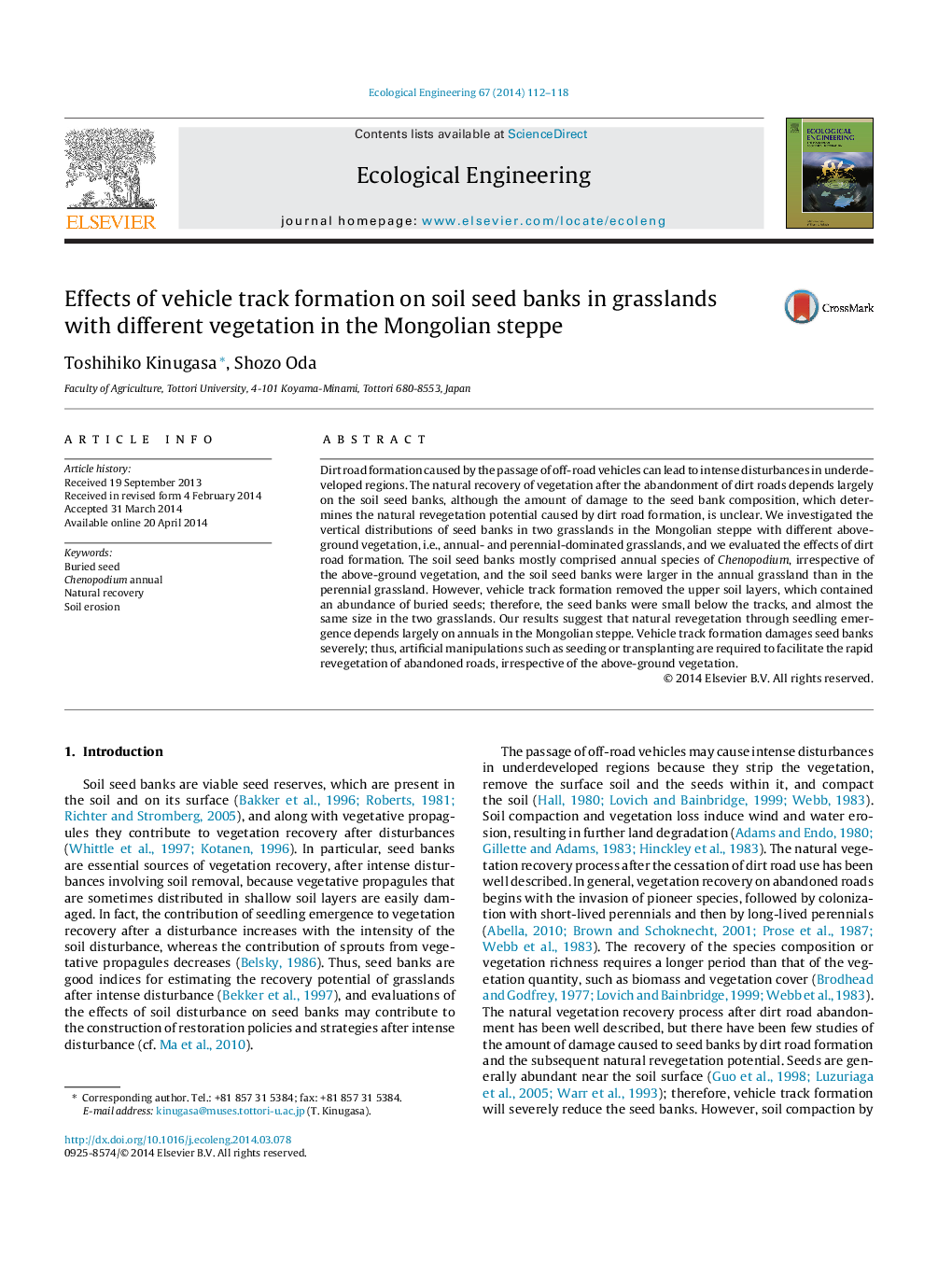| Article ID | Journal | Published Year | Pages | File Type |
|---|---|---|---|---|
| 4389420 | Ecological Engineering | 2014 | 7 Pages |
•The seed banks mainly comprised Chenopodium annuals.•Annual-dominated grassland had larger seed banks than perennial-dominated grassland.•Vehicle tracks removed the upper soil layers, which contained many buried seeds.•Seed banks under the tracks were very small and similar in size in both grasslands.•Treatments are required to facilitate the rapid revegetation of abandoned roads.
Dirt road formation caused by the passage of off-road vehicles can lead to intense disturbances in underdeveloped regions. The natural recovery of vegetation after the abandonment of dirt roads depends largely on the soil seed banks, although the amount of damage to the seed bank composition, which determines the natural revegetation potential caused by dirt road formation, is unclear. We investigated the vertical distributions of seed banks in two grasslands in the Mongolian steppe with different above-ground vegetation, i.e., annual- and perennial-dominated grasslands, and we evaluated the effects of dirt road formation. The soil seed banks mostly comprised annual species of Chenopodium, irrespective of the above-ground vegetation, and the soil seed banks were larger in the annual grassland than in the perennial grassland. However, vehicle track formation removed the upper soil layers, which contained an abundance of buried seeds; therefore, the seed banks were small below the tracks, and almost the same size in the two grasslands. Our results suggest that natural revegetation through seedling emergence depends largely on annuals in the Mongolian steppe. Vehicle track formation damages seed banks severely; thus, artificial manipulations such as seeding or transplanting are required to facilitate the rapid revegetation of abandoned roads, irrespective of the above-ground vegetation.
